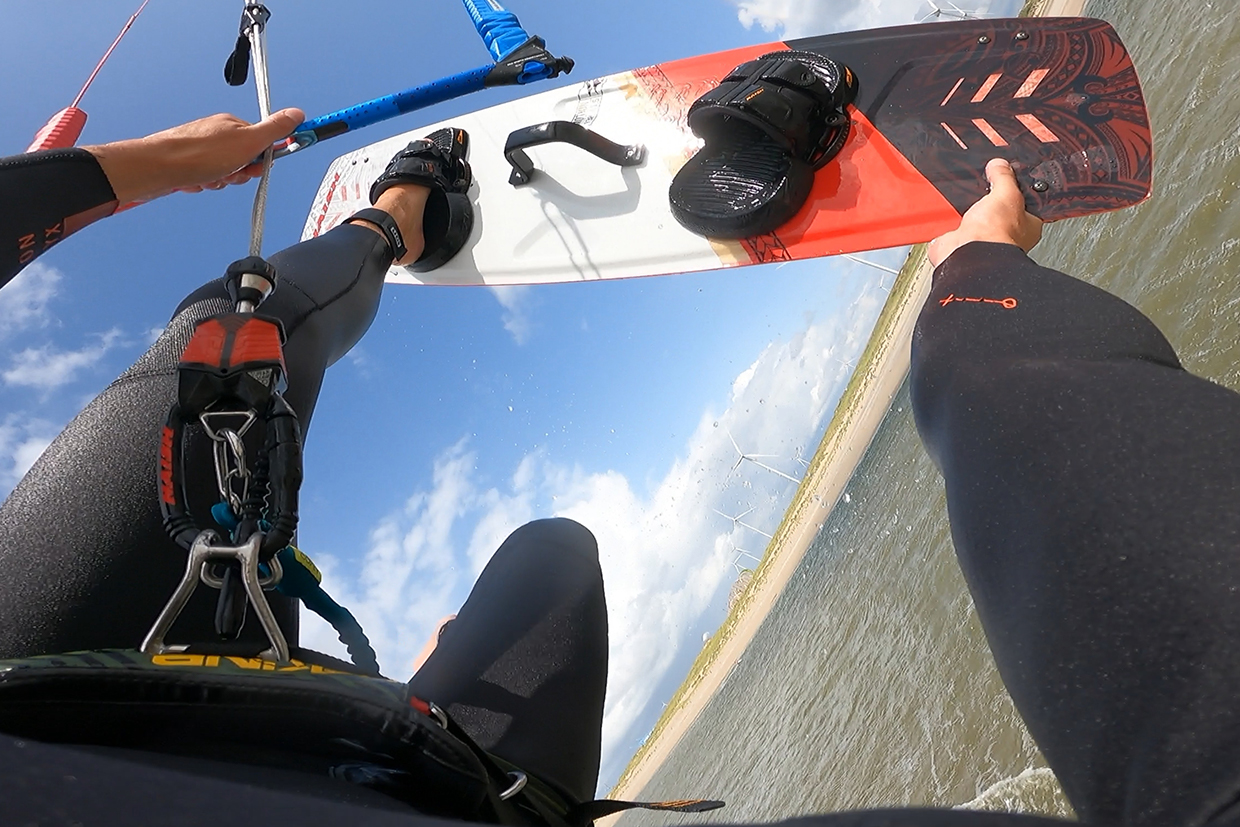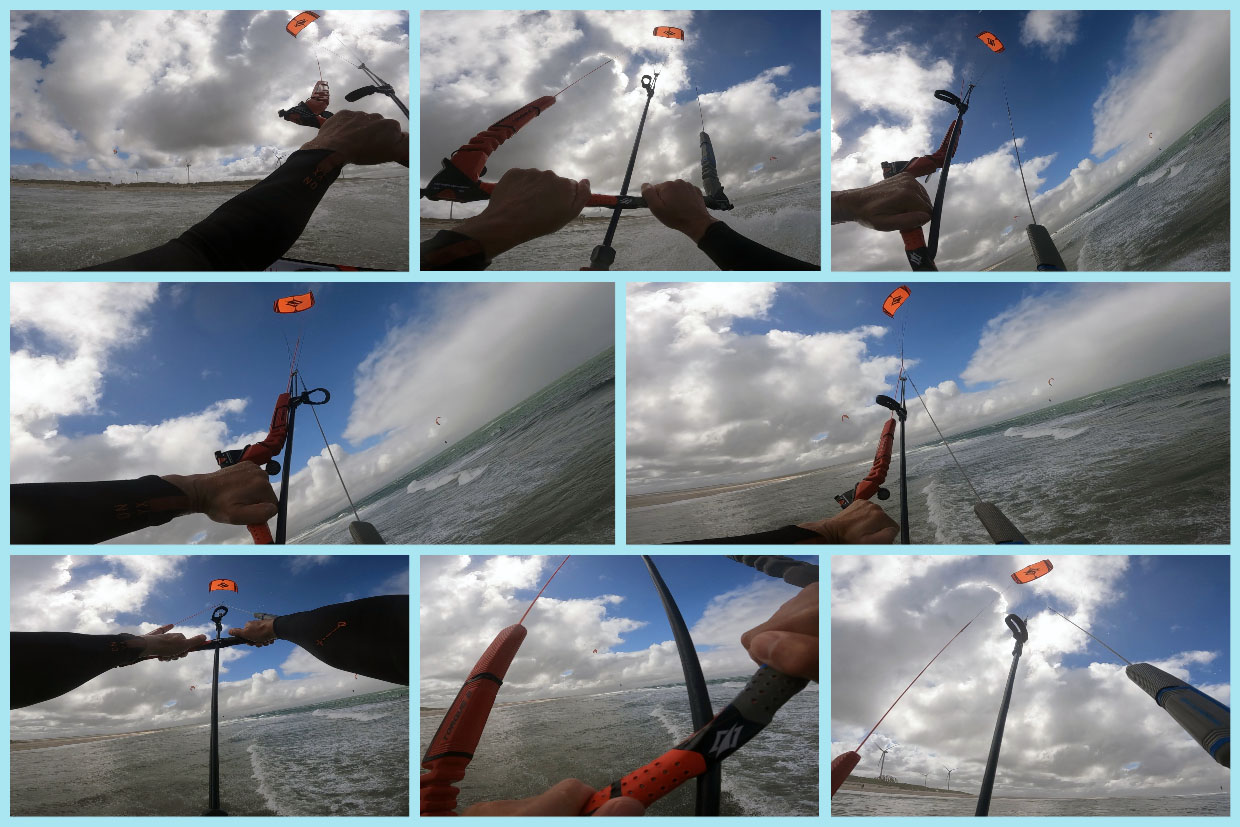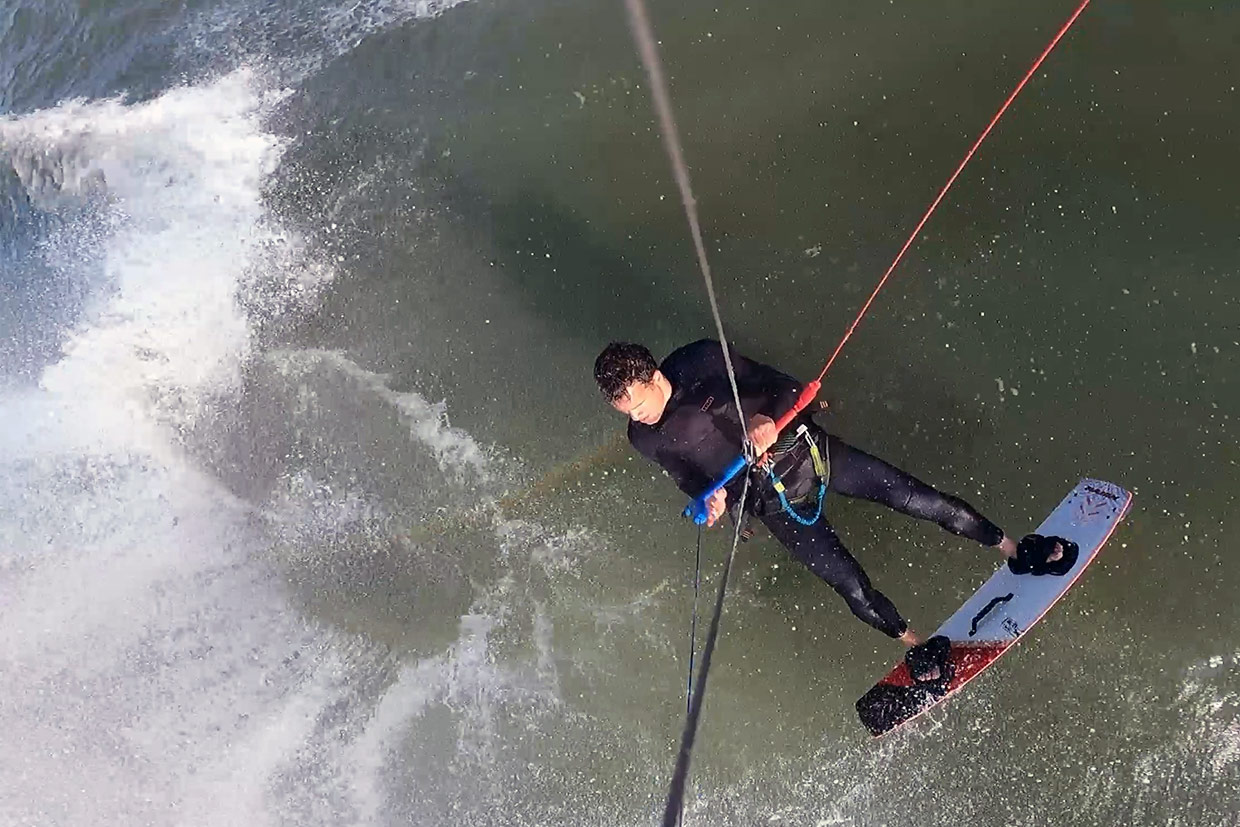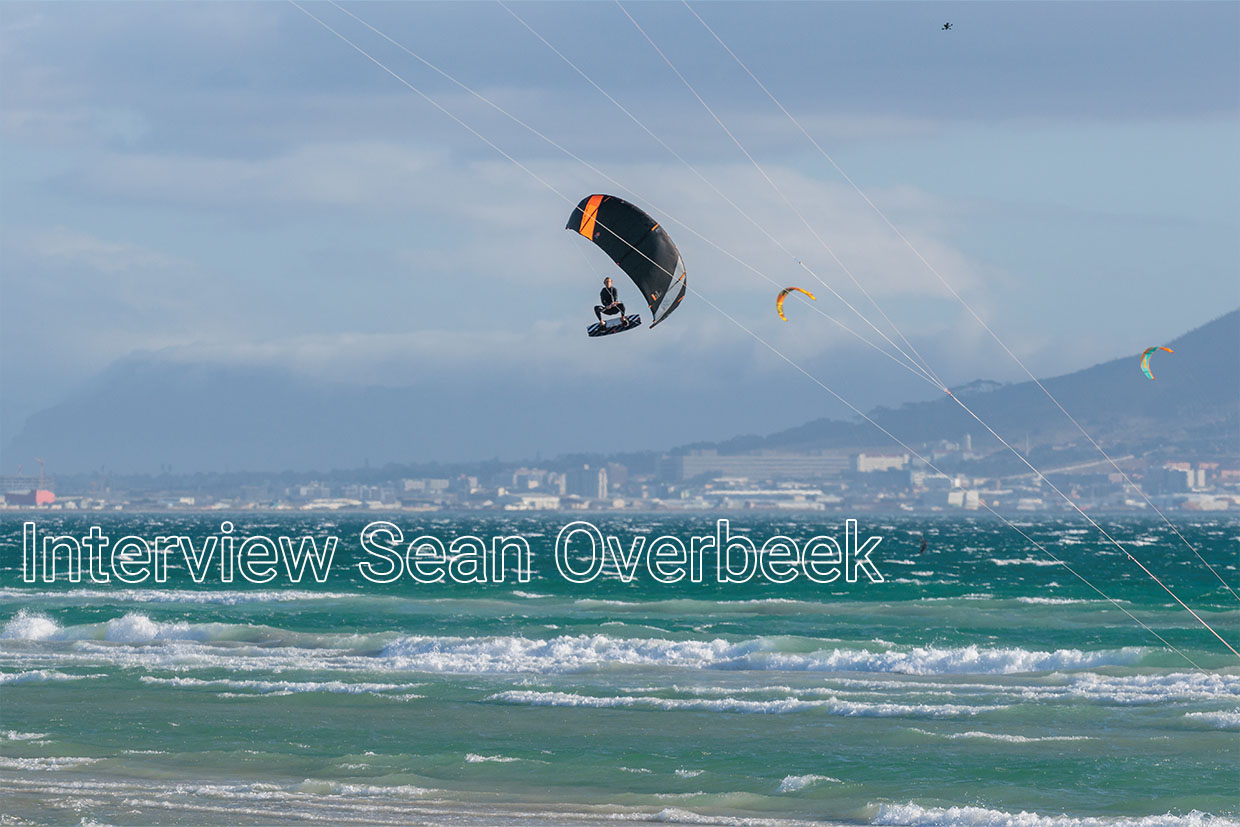Of course you don't have to participate. Kitesurfing is a super diverse sport with something for everyone. Anyway, you know we are still ambitious and practicing kitesurfing tricks. I already took you in my bloopers when practicing the 'board off'. In this kitesurf blog there is a successful explanation. Namely that of the 'one footer'. Also called the 'one footer straight air'. A spectacular jump that you can expand into an acrobatic spectacle.
Favorable conditions for a 'one footer'
To practice the 'one footer' you choose a wind that is as stable as possible. You can do these kind of tricks with a very large kite and little wind. Of course you need altitude and time in the air. I was on the water with a 9 meter Naish triad and an Naish Motion kiteboard at about 25 knots. At sea it is nice if you have a piece of sea with fewer waves for practice. Strong wind in combination with gusts and a small kite is not suitable for practicing 'one footers'.
If you can, you can expand the 'one footer' in the waves and add extra style. Spectacular!
'One footer' kitesurf trick explained step by step
Time required: 1 minute
We lend you a hand by explaining the 'One footer' in 15 easy steps. Depending on your level, you probably know whether you can start. Are you still in doubt? Then start practicing with steps 1 to 6. You can build up the 'one footer' just fine.
- Foot straps not too tight
Make sure your feet are not too tight in foot straps. In particular, the foot that you want to remove from the foot straps should not be caught in the foot strap. If you normally have your feet completely clamped in the foot straps, you will now have to adjust them a little looser.
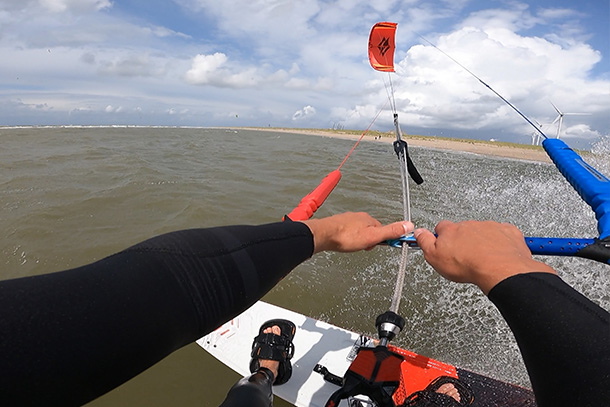
- Timing the 'one footer'
Timing your takeoff correctly is crucial. In the beginning, a flat piece of water is fine so that you have full control over the timing. As soon as the 'one footer' succeeds, you can expand this in the surf to large waves at sea. Of course, a wave as a ramp is a wonderful start for a high 'one footer'.
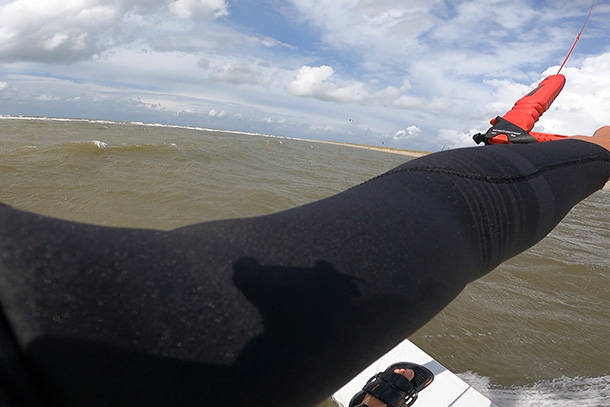
- Sales for a 'one footer'
Of course you need some time in the air ('hang time'). For a 'one footer' with your foot only briefly in and out of the footstrap, you obviously need less time and height. But for a high 'one footer' with a lot of style 'hang time' is needed. That starts with sales. To do this, you have to edge as hard as you can while steering the kite. Stay on edge as long as possible until the kite is almost directly above you. Then pull the bar firmly so that you are pulled into the air. You send the kite at the take-off until about 10 o'clock or 2 o'clock as we call these positions in the wind window. Do not send the kite past there because then you run the risk that you can no longer steer it from there, resulting in a crash.
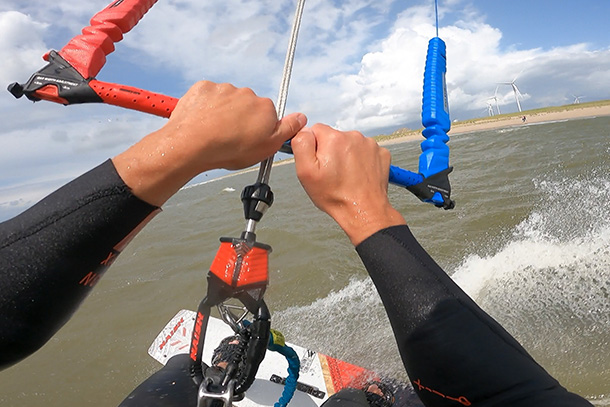
- One hand in the middle of the bar
Just before your take-off, make sure your hand that stays on the bar is as close to the center of the bar as possible. So actually so close to your 'depower' lines or even with your thumb over the middle. This ensures that your kite stays as good as possible over the middle of the wind. So on the opposite side of your sailing direction. If you do not do this, you will quickly be pulled in the air in your direction with the risk of becoming unbalanced and/or a crash.

- Do not depower and moment of abort or persevere
During the process of the previous step, you want to maintain as much power as possible after your steep take-off into the air. In these milliseconds you will also notice whether this is a jump for a successful 'one footer' or not. If your wind fails you, you break off the 'one footer'. If you get a gust of wind and you don't feel confident or if you don't get into the right position, you simply break off the 'one footer' and make another nice jump.
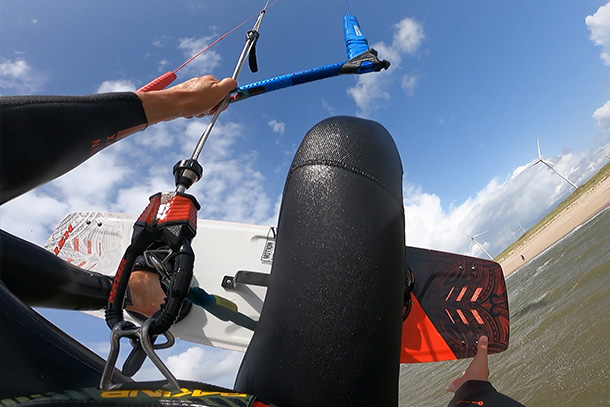
- Position of your body and offering the kiteboard
Because you have edged hard, jump high, have one hand in the middle of the bar and have the kite in the right position, you are well placed for the 'one footer'. Due to the position of the kite you are well turned in with your body in the opposite direction of your sailing direction. This allows you to easily reach the back of your kiteboard. You then also work with the 'one footer' a bit sideways from the kiteboard instead of perpendicular to it. This makes everything easier. Now you draw both knees and offer your knee of the foot you want to remove from the foot straps.
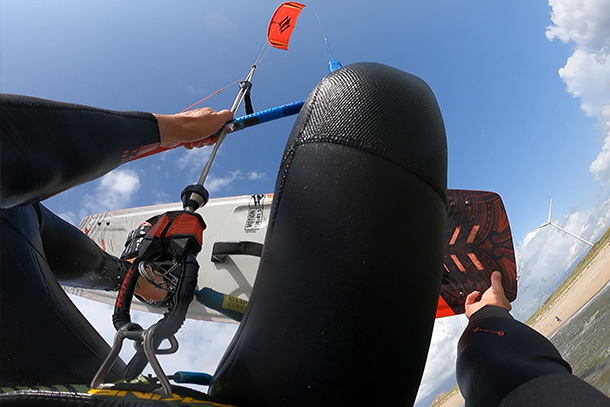
- Grab the back of the kiteboard
You grab the back of the kiteboard and at the same time you pull your foot out of the foot strap. Several variations are now possible. For convenience, you push your loosened foot under the kiteboard.
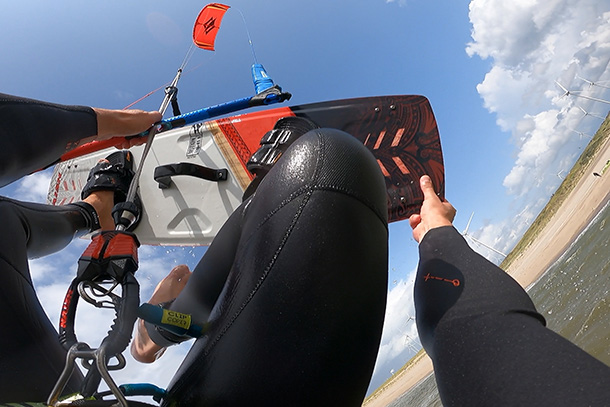
- Add style to your 'one footer'
If your detached foot is under the kiteboard, you almost automatically stretch your arm and the foot that have contact with the kiteboard. Look, that already looks beautiful. Depending on your height and control, you can now make your 'one footer' even more beautiful by extending your legs all the way.
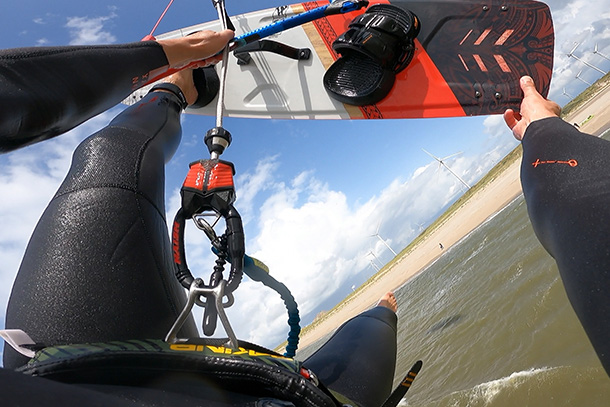
- To Enjoy
This is the moment to enjoy and you have to grab it. This is often the first boost of adrenaline for me because of the kick.
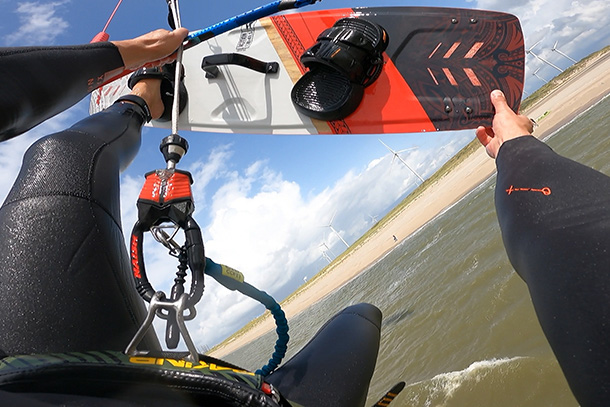
- Bring the foot back above the kiteboard
We're going to work towards landing. This starts with bringing your foot back from under the kiteboard to above the kiteboard. As soon as you do this, you almost automatically retract your knee from the foot that is still in the foot strap. You also pull your arm slightly towards you. You can see I'm still working a bit sideways from my kiteboard instead of perpendicular to it. The position of the kite, still opposite of your sailing direction or now directly above you, makes this possible. This makes everything easier.
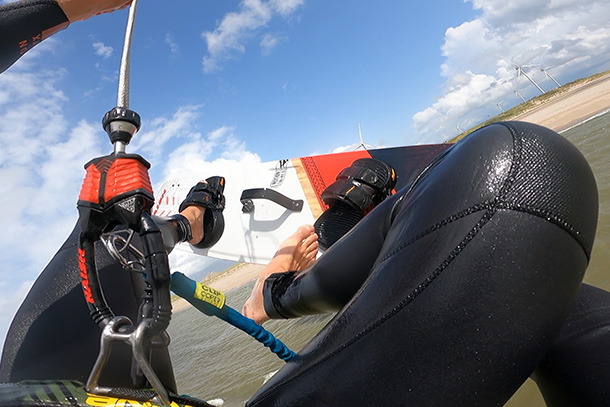
- Foot back in the footstrap requires concentration
It's now a millisecond of 100% focus on the foot strap that your foot needs to get back into. By looking at that, your brain guides your foot back into it. The moment you feel that your foot is well enough in the foot strap, bring your hand from the edge of the kiteboard to the bar. You should then be on a downward slope.

- Ready to land
A good position is that the kite is above you. So not in front of you or in the corner of the wind window. You achieve this by holding the kite in control with one hand in the middle of the bar and by disabling something on landing so that the kite stays above you or can even climb slightly.
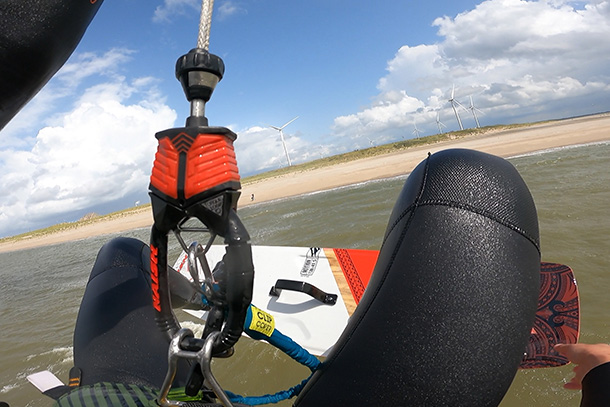
- Submit a kite
When descending just above the water you steer this kite in the direction of your sailing direction.
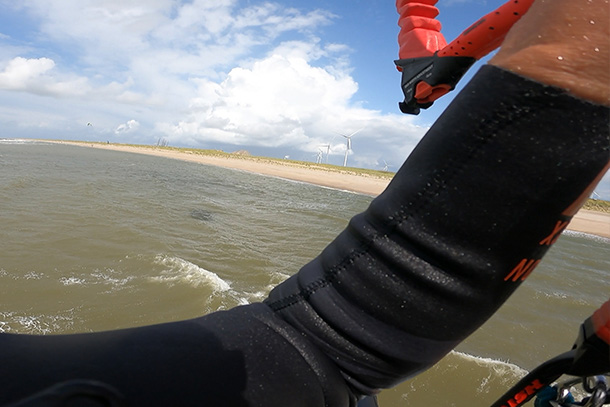
- Landing kiteboard in front of the wind
Wrap up your landing by landing your kiteboard in front of the wind rather than trying to land directly on course. This helps for a soft landing and reduces the risk of being pulled past your kiteboard.
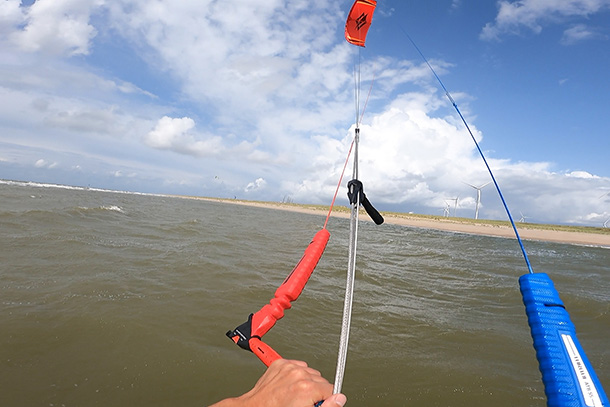
- Continue the course and enjoy again
You can now go extra sides to walk high and do what you white. Landing successful? Then it's time for the second adrenaline rush.
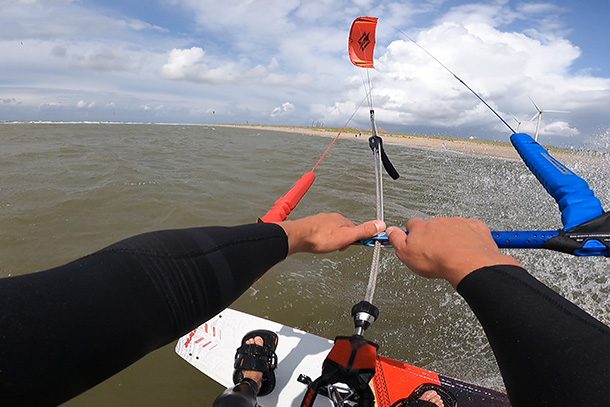
Conclusion 'one footer'
Of course you have to a game of kitesurfing before you make a 'one footer' and continue kitesurfing neatly. But with focus and a little perseverance, a 'one footer' is achievable as far as I'm concerned. After all, it is a kitesurfing trick that you can build up and therefore also break down in the air if it doesn't work out anyway. You can see me doing that in the video. Feel free to let me know if you want any tips or tips for me.
Which kitesurf trick do you want to learn? Let us help…
Do you have a kitesurfing trick that you would like to learn and want some explanation about? Let us know. We are really not the best kite surfers, but we like to guide kite surfers and kite surfers in the making. And we are in contact with the best kite surfers who might want to give us, and therefore also you, a helping hand.


